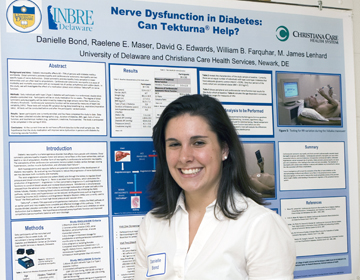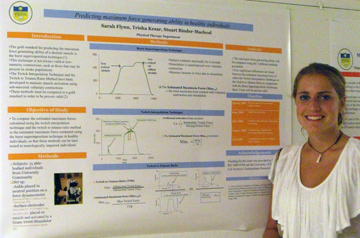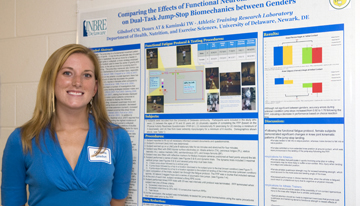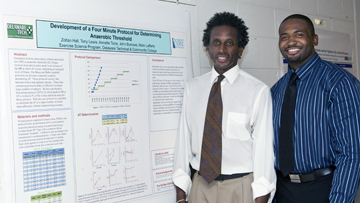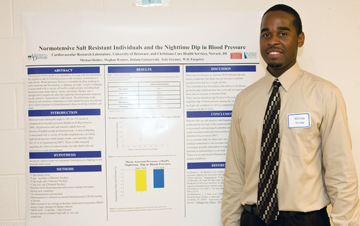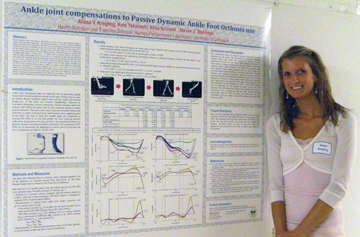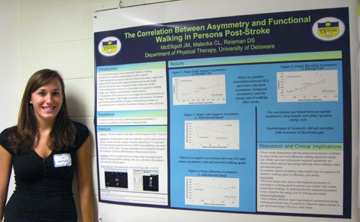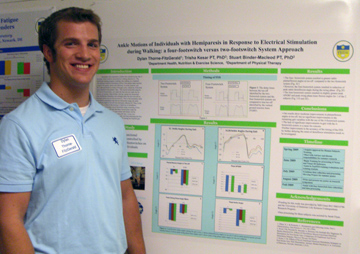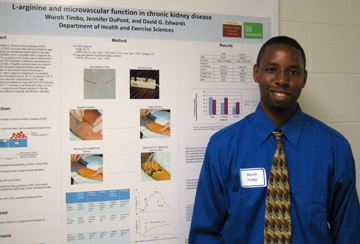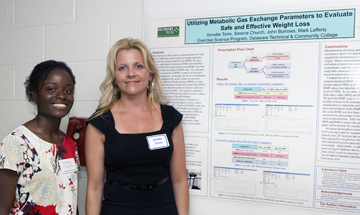| Beri | Gilsdorf | Kregling | Mosko | Torre |
| Bond | Hall | Lewis | Mulrooney, Ta | |
| Darocki |
Holder | Mahmoud | Thorne-FitzGerald | |
| Flynn | Kelly | McElligott | Timbo |
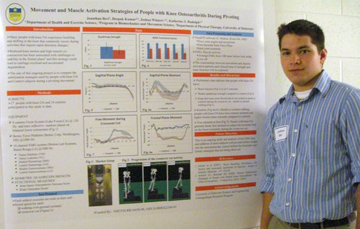 Movement and Muscle Activation Strategies of People with Knee Osteoarthritis during Pivoting Jonathan Beri1, Deepak Kumar2,3, Joshua Winters2,3, and Katherine S. Rudolph2,3 1Department of Health and Exercise Science, 2Program in Biomechanics and Movement Science, 3Department of Physical Therapy People with knee osteoarthritis
(OA) walk with less knee motion and higher muscle activity, which
overtime, can lead to higher joint loading and a rapid progression of
the disease. Recent studies have demonstrated that people with knee OA
experience buckling in the knee, thus analysis of an activity like the
crossover cut that involves pivoting would provide insight into
strategies associated with torsion at the knee. The aim of this
project is to compare the neuromuscular patterns of people with knee OA
and healthy controls during the crossover cut. A 3-D motion
capture system, force platform and 16 channel EMG system will be used
to collect movement and muscle activation patterns while knee OA and
control subjects perform ten trials walking over-ground at their
natural self-selected speed. Ten trials of a crossover cut task
will also be collected in which subjects start walking straight ahead,
plant their involved foot on a force platform, pivot 45o toward the
involved side, and continue walking forward along the 45°
trajectory. Knee motion, peak loading, and levels of muscle
activation will be compared between the two groups. The
relationships between movement and muscle activation patterns and
clinical tests of strength and knee function will be explored.
Currently there are no reports analyzing knee torsion in people with
knee OA. The results of this project could provide insight into
mechanisms that might accelerate knee degeneration and information that
might be useful in developing rehabilitation interventions to reduce
knee loading for people with knee OA. Funding for this project has been
provided by NIH P20 RR16458 and NIH S10RR022396.
|
